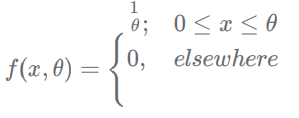Question
____ is the second tallest person and _____ is the third
lightest person. Answer the questions based on the information given below: Seven persons R, S, T, U, V, W and X have different heights and different weights. T is taller than S but shorter than W. U is shorter than S but taller than V. The third shortest person is just lighter than the second shortest person. V is not the shortest person. R is taller than S but not the tallest. R is heavier than T but not just heavier than T. Equal number of persons is heavier and lighter than the tallest person. The shortest person is heavier than the tallest person but he is not the heaviest. S is lighter than U but heavier than the second tallest person.Solution
T is taller than S but shorter than W. U is shorter than S but taller than V. V is not the shortest person. R is taller than S but not the tallest. We get W is the tallest person and X is the shortest person. R and T are the 2nd and the 3rd tallest person but may not be in same order. S, U and V are the 4th, 5th and 6th tallest persons respectively. Therefore, the arrangement we get on the basis of heights: W (tallest) > R/T > T/R > S > U > V > X (shortest) Equal number of persons are heavier and lighter than the tallest person. The shortest person is heavier than the tallest person but he is not the heaviest. The third shortest person is just lighter than the second shortest person. S is lighter than U but heavier than the second tallest person. R is heavier than T but not just heavier than T. _____ > _____ > _____ > W > _____ > _____ > _____ W is the 4th tallest person. X is either 2nd or 3rd heaviest person. U is just lighter than V. X is the 3 rd heaviest person, V is the heaviest person and U is the 2nd heaviest person. S is lighter than W. We get T is the lightest person and he is the 2nd tallest person. R and S are the 3rd and the 2nd lightest persons respectively. R is the 3rd tallest person. Therefore, the final arrangement on the basis of height: W (tallest) > T > R > S > U > V > X (shortest) And the final arrangement on the basis of weight: V (heaviest) > U > X > W > R > S > T (lightest)
For the ANOVA which of the following options is INCORRECT.
1. Null hypothesis H0 : μ1 = μ2 = ... = μn
2. F ...
For the distribution with unknown θ

We set the tes...
The grouped data for the observation are as follows.
Class : 2-4 4-6 6-8<...
If ten coins are tossed simultaneously, then the probability of getting at most I head is:
If mean and mode of the distribution is 32 and 21, then the distribution:
For making frequency distribution, the number of classes used depends upon:
Which one is parameter from population?
The mean and median of the distribution are 10 and 11 respectively, then the mode equals to
The deseasonalised time - series data will have only trend (T), cyclical (C) and irregular (I) components and is expressed as:
If xi | fi , i = 1,2,...n is a frequency distribution with standard deviation 15 and mean 30, the coefficient of variation will be equal to:



